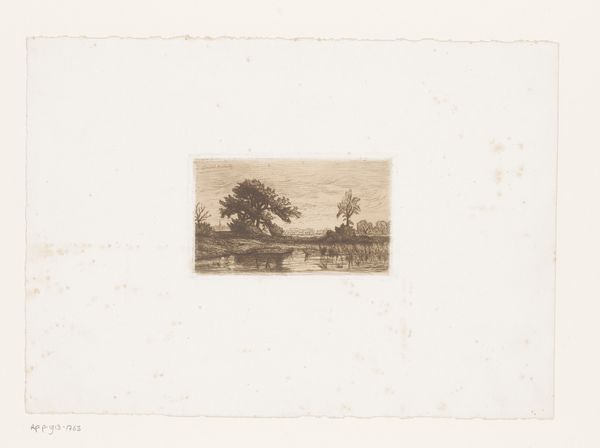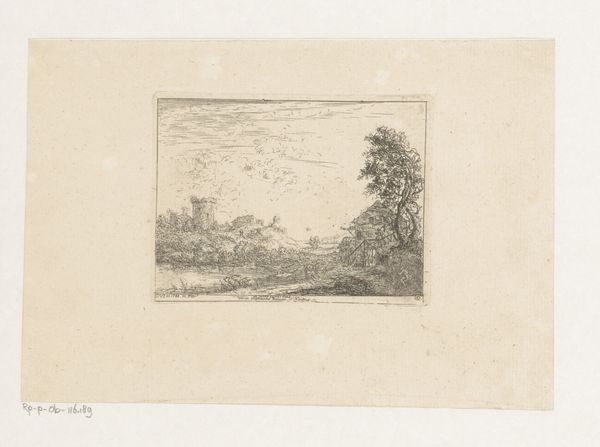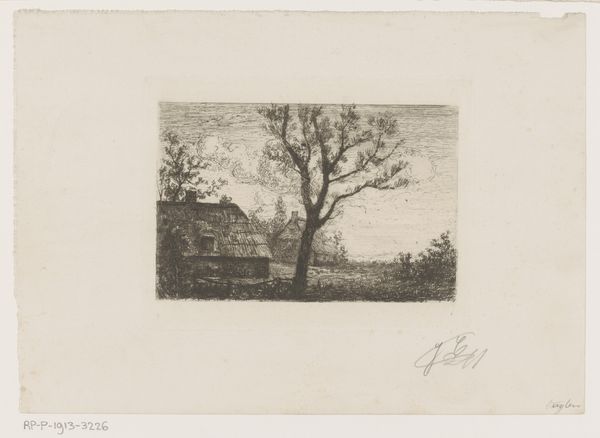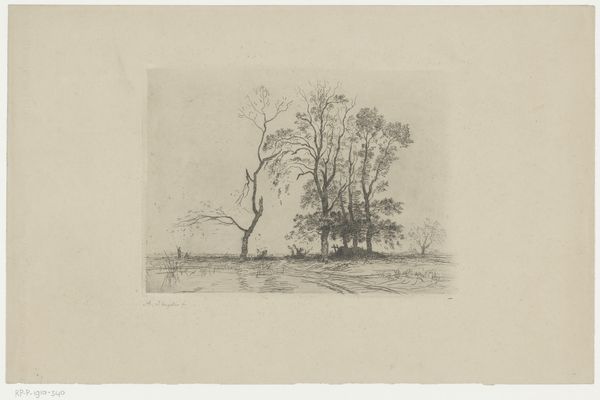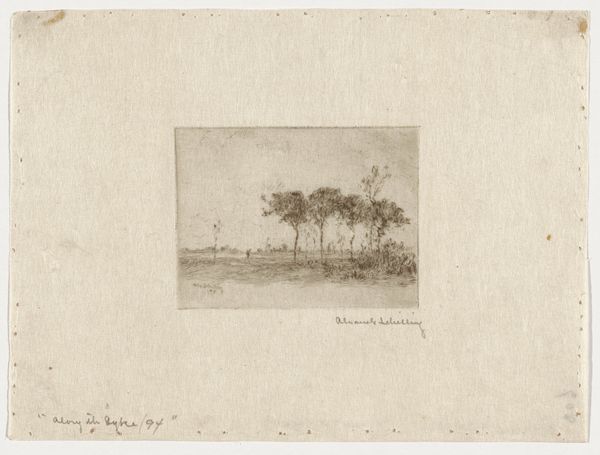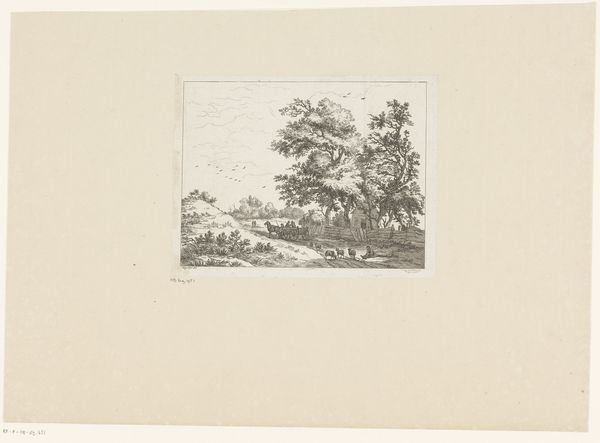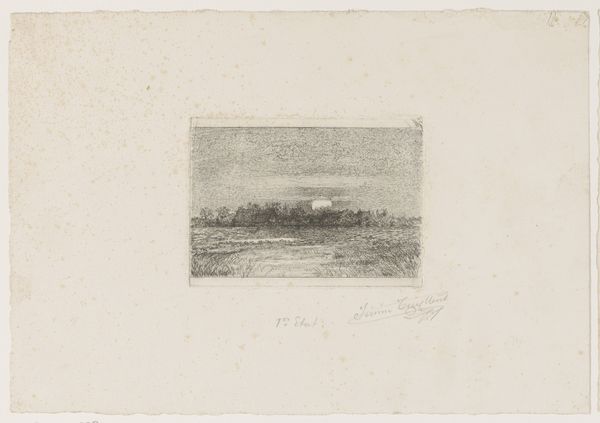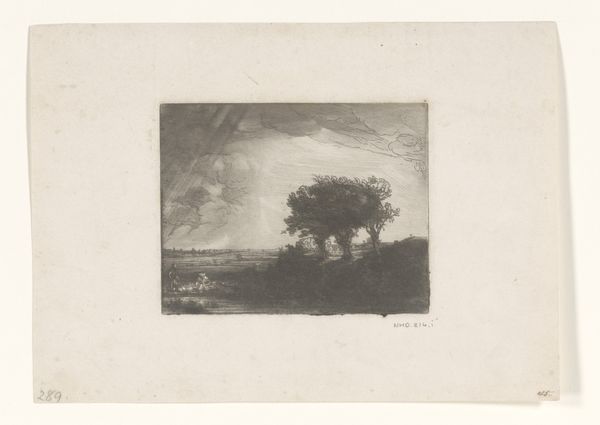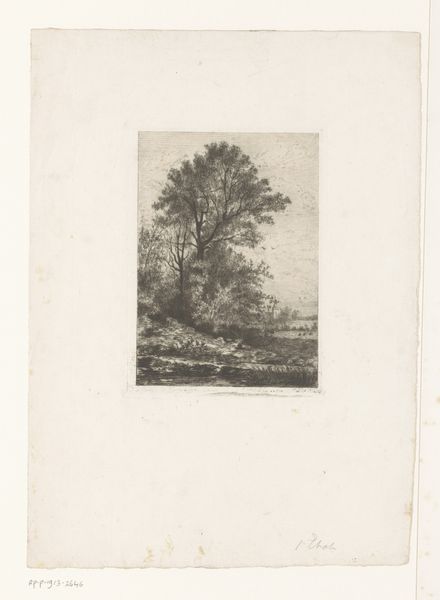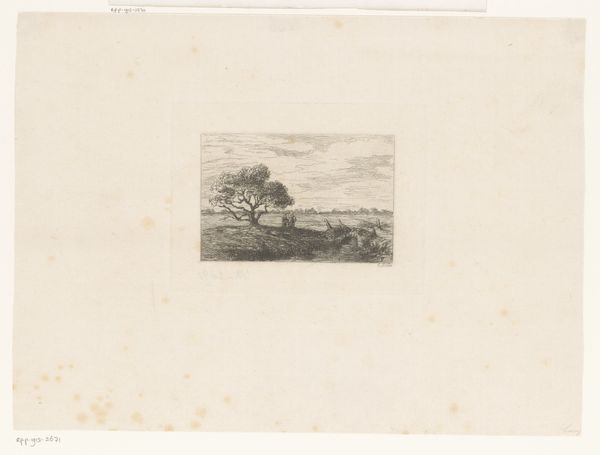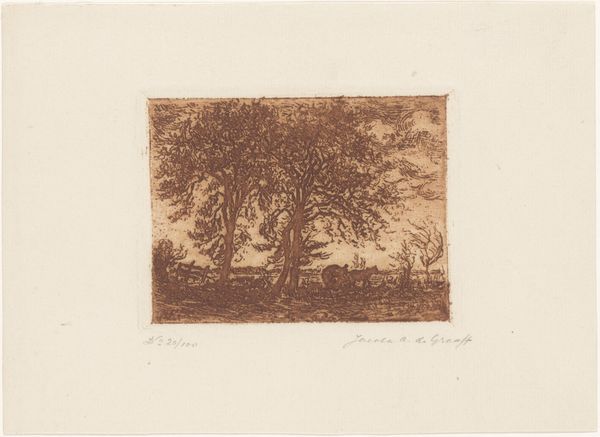
#
photo of handprinted image
#
toned paper
#
light pencil work
#
water colours
#
ink paper printed
#
possibly oil pastel
#
underpainting
#
watercolour bleed
#
watercolour illustration
#
watercolor
Dimensions: height 215 mm, width 284 mm
Copyright: Rijks Museum: Open Domain
Curator: Here we have "The Three Trees" from around 1854-1858, a hand-printed photograph made by Bisson Frères, currently residing at the Rijksmuseum. Editor: The trees definitely command attention, but the scene also feels very quiet. Almost hushed, like you shouldn't interrupt anything. Curator: Right, well landscape photography during this period had to be carefully composed to suggest broader themes—nature as refuge, for example, against the pressures of industrialization. It played a key role in how the burgeoning middle classes thought about their relationship with nature. Editor: Hmm, maybe. For me it also brings to mind the idea of resilience. Look at how those trees are placed on that horizon line. They are stoic and stand firm; it could be viewed in parallel with how ordinary folk continued with daily lives during unsettling times, finding beauty in simple landscapes and keeping a close bond to nature to ground them. Curator: Well, yes. The image's tonal qualities – the softness of the light – absolutely plays a part in evoking feelings like those you described. The Bisson Frères were using the calotype process here. It often created images that looked softer and more artistic compared to sharper processes available, like the daguerreotype. Editor: The texture is almost dreamlike—with a slight vagueness around the edges of the tree branches which give a subtle ethereal quality. Makes me think how time changes things, always moving forward, but memories blur with each passing year, losing finer detail to the passage of time. Curator: Interesting. So, while the soft focus may have been an inherent part of the photographic process itself, it ended up aligning perfectly with a cultural desire for a kind of idealized and even romanticized view of nature, which spoke directly to its 19th century audiences. Editor: I get it, makes sense when you look at the role nature had on their sense of self! Now I see these almost more symbolically - like they're protectors overseeing that distant world that we can only imagine. Well, I suppose art is more thought-provoking when we see its past and its present intertwine with future interpretations! Curator: I concur entirely - I see that after our exchange, viewing photographs like this allows us to explore new dialogues on nature, human relationship, and even industrial advancements.
Comments
No comments
Be the first to comment and join the conversation on the ultimate creative platform.
